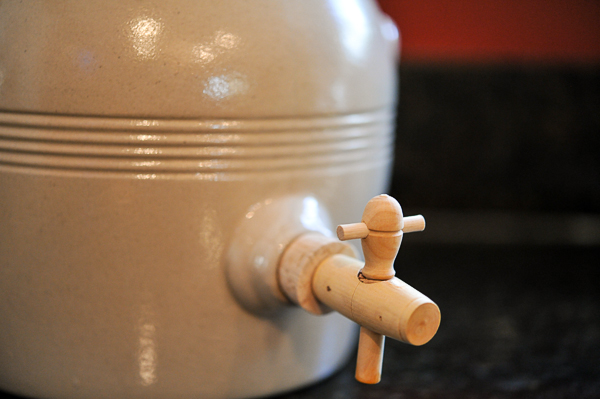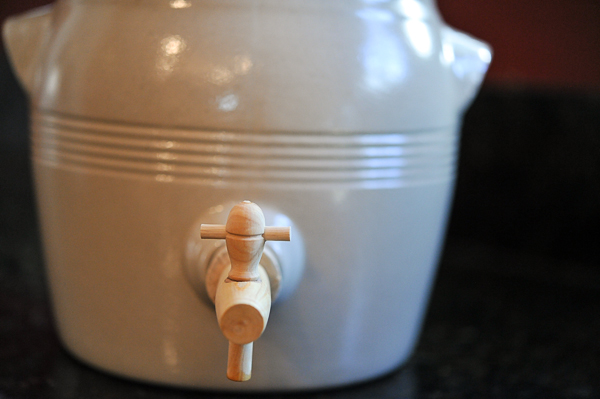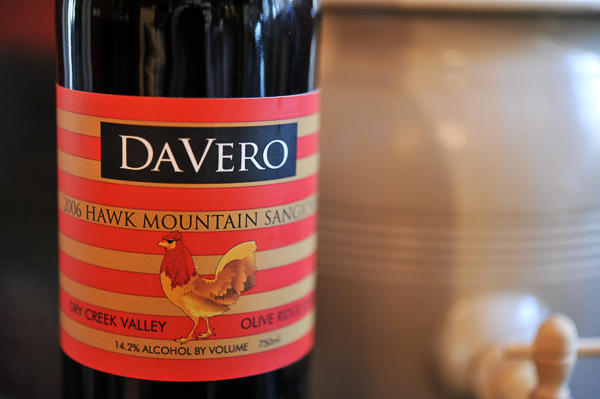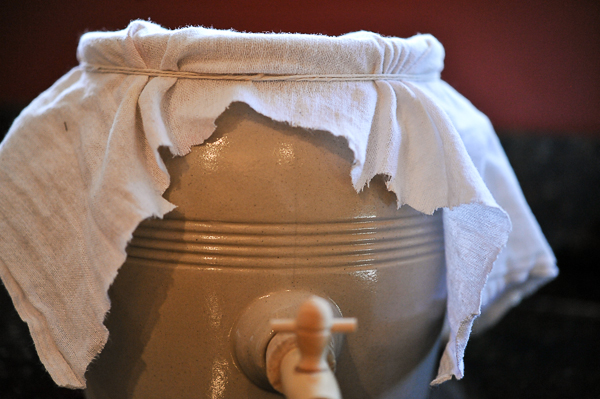 Not that I really needed another use for red wine, my first choice (in a nice big glass) was working out brilliantly. What I really needed was good red wine vinegar. When we lived in Minneapolis, Bill's Imported Foods was my spot for all sorts of kitchen supplies— olive oil, French feta, Moroccan olives, cornichons and wine vinegar. Since Bill's is about 200 miles away and my trips back to Minneapolis are infrequent, I needed another plan of attack.
Not that I really needed another use for red wine, my first choice (in a nice big glass) was working out brilliantly. What I really needed was good red wine vinegar. When we lived in Minneapolis, Bill's Imported Foods was my spot for all sorts of kitchen supplies— olive oil, French feta, Moroccan olives, cornichons and wine vinegar. Since Bill's is about 200 miles away and my trips back to Minneapolis are infrequent, I needed another plan of attack.
I googled 'homemade red wine vinegar', bought a mother (from here), bought a crock (from here), grabbed a nice bottle of wine and set out on my latest culinary journey. It's going to be a long one, at least 10 weeks according to Paula Wolfert, but I have a feeling it's going to be well worth the wait. Trust me, you'll be the first to know if I made the red wine vinegar of my dreams or something that smells like 'furniture polish'. Lord knows I have a steady supply of red wine to keep my mother happy and well fed. If it works out, I will have fresh wine vinegar forever— how cool is that??
Making Red Wine Vinegar By Paula Wolfert (From Food and Wine Magazine October 2006)
Buy a 1-gallon earthenware crock with a top-quality wood or plastic spigot. Add water to the crock to check for leaks; drain the crock.
Buy an 8-ounce bottle of commercial mother from a wine and beer-making supply shop (or get it from a friend).
Add 2 cups of good red wine and 1 cup of filtered water to the crock (or enough to at least cover the spigot), then add the mother. Cover the crock with a double layer of cheesecloth and fasten with a rubber band (or just use the lid with the hole in it).
Set the crock in a warm (70° to 90°), dark spot and let stand for 1 1/2 weeks.
Add red wine to the crock in three 2 1/2-cup installments over the next 1 1/2 weeks; the crock should then be two-thirds full. Once a thin veil has formed on the surface, add the wine through the tube of the bulb baster tucked under the edge of the veil. Let the crock stand for a total of 10 weeks. Check periodically: If your vinegar ever begins to smell like furniture polish, discard it, wash the crock and start over.
Bottle the vinegar when it smells sharp and crisp: Strain it into sterile bottles through a plastic funnel lines with a paper coffee filter. (If you plan to start the process over, leave 2 cups vinegar in the crock and just add wine and water.) The vinegar will mellow in the bottle and improve with age, but if you plan to keep it more than 4 months, pasteurize it: Heat the vinegar to 155° in a stainless steel saucepan and hold it there for 30 minutes. Store the vinegar in sterilized, well-sealed bottles in a cool, dry place. Use homemade vinegar for dressings and sauces and as a seasoning; never use it for pickling


